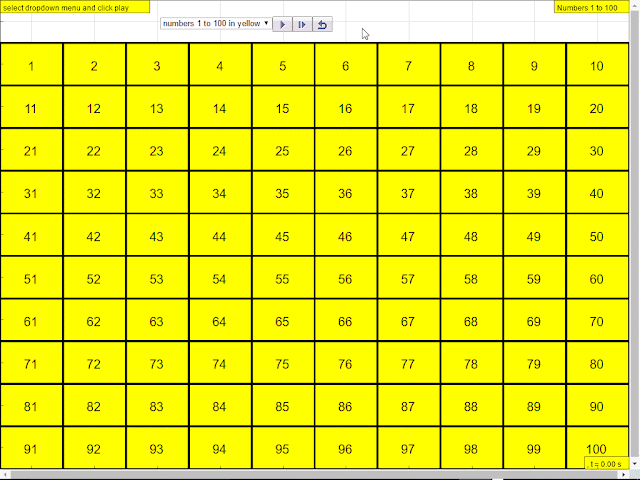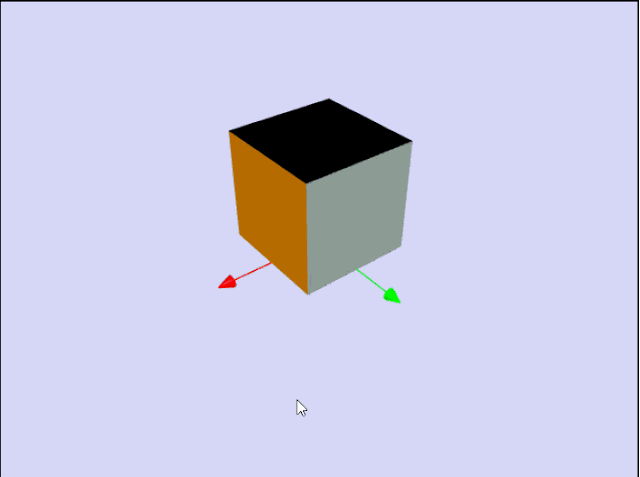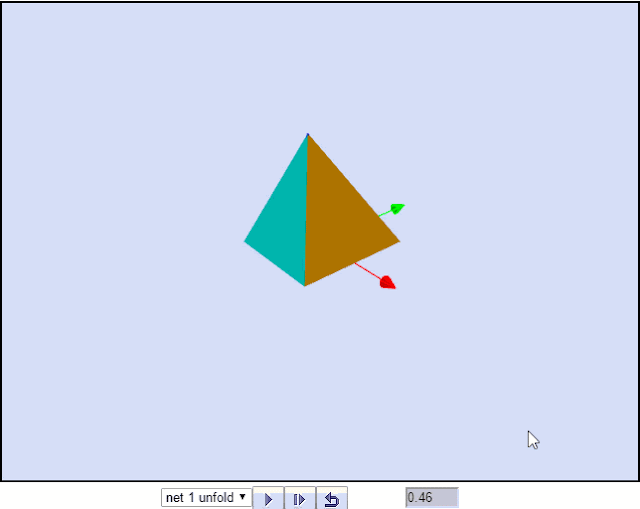Title of Research Project
Explore-Useful Learning Math AppsAbstract
Mobile devices are increasingly adopted for teaching and learning in and out of classrooms. In addition, One Portal All Learners (OPAL)[1] resource library shows that Primary mathematics makes use of non-HTML5 web-based applets which are not compatible[2] with these mobile devices. Moreover, many of these applets are also not localised to our national curriculum (Wee & Mak, 2009).
Aligned with the ICT Masterplan 4[3] goal of “Quality Learning in the Hands of Every Learner - Empowered with Technology”, we propose an approach to design and develop open sourced Mathematics learning resources, compatible with almost any mobile devices in an efficient and sustainable manner. For scaling up these ICT practices, we will be guided by the 3A framework of Accessible (Licenses creative commons attribution), Adaptable (Open source codes) and Affordable (free of charge).
Our Spanish collaborator will provide in-depth app development guidance while MOE team members work closely with teachers to scan the learning issues and desired curriculum outcomes, develop solutions (app, worksheets and guides), and share with the network communities in schools.
[1] http://mydesk.opal.moe.edu.sg/cos/o.x?c=%2Fca4_mydesk%2Fisearch3&func=search&rid=6536&search_text=speed+math&Submit=
[2] http://www.nctm.org/standards/content.aspx?id=25037
[3] http://ictconnection.moe.edu.sg/masterplan-4/vision-and-goals
In brief, stage 1: empathize aims to develop a deep understanding of the teaching and learning challenge-problem by networking with teachers and scanning the internet and literature. Stage 2: define aims to clearly articulate the problem the project wants to solve as agreed by the team. Stage 3: ideate aims to brainstorm potential solutions using the open source tools selected by the PI and develop the solution using open licensed tools to lower barriers to scaling up these practices using our solutions-apps. Stage 4: aims to design a series of prototypes to test part(s) of the solution and integrate them eventually. Lastly, stage 5: test aims to engage in continuous short cycle of innovation process to continually improve the design.
Samples of the designing thinking methodology are available here as the project members empathize, define, ideate, prototype and test Math apps over and beyond the course of the funding period.
[4] http://iwant2study.org/ospsg/index.php/interactive-resources/mathematics/numbers-and-algebra/whole-numbers/1-numbers-up-to-100/398-number1to100
[6] http://iwant2study.org/ospsg/index.php/interactive-resources/mathematics/measurement-and-geometry/geometry/2-3d-shapes/411-netsofsolidswee
[7] http://iwant2study.org/ospsg/index.php/interactive-resources/mathematics/measurement-and-geometry/measurement/2-time/380-primathspeedv8
[8] http://iwant2study.org/ospsg/index.php/interactive-resources/mathematics/measurement-and-geometry/geometry/2-3d-shapes/412-netsofprismwee
Stage 1: Knowledge acquisition by watching video tutorials
Stage 2: Knowledge formation by inquiry/activity
Stage 3: Knowledge construction by practice/discussion
Stage 4*[may be implemented where appropriate] : Knowledge extension by application/production
Aligned with the ICT Masterplan 4[3] goal of “Quality Learning in the Hands of Every Learner - Empowered with Technology”, we propose an approach to design and develop open sourced Mathematics learning resources, compatible with almost any mobile devices in an efficient and sustainable manner. For scaling up these ICT practices, we will be guided by the 3A framework of Accessible (Licenses creative commons attribution), Adaptable (Open source codes) and Affordable (free of charge).
Our Spanish collaborator will provide in-depth app development guidance while MOE team members work closely with teachers to scan the learning issues and desired curriculum outcomes, develop solutions (app, worksheets and guides), and share with the network communities in schools.
[1] http://mydesk.opal.moe.edu.sg/cos/o.x?c=%2Fca4_mydesk%2Fisearch3&func=search&rid=6536&search_text=speed+math&Submit=
[2] http://www.nctm.org/standards/content.aspx?id=25037
[3] http://ictconnection.moe.edu.sg/masterplan-4/vision-and-goals
Design Thinking Methodology
Our approach is to empathize, define, ideate, prototype and test Math apps tailored to the Singapore Primary syllabus, improved-infused with literature and school-based-research pedagogical features and free on the internet for anyone to use, for the benefit of all students in Singapore.In brief, stage 1: empathize aims to develop a deep understanding of the teaching and learning challenge-problem by networking with teachers and scanning the internet and literature. Stage 2: define aims to clearly articulate the problem the project wants to solve as agreed by the team. Stage 3: ideate aims to brainstorm potential solutions using the open source tools selected by the PI and develop the solution using open licensed tools to lower barriers to scaling up these practices using our solutions-apps. Stage 4: aims to design a series of prototypes to test part(s) of the solution and integrate them eventually. Lastly, stage 5: test aims to engage in continuous short cycle of innovation process to continually improve the design.
Samples of the designing thinking methodology are available here as the project members empathize, define, ideate, prototype and test Math apps over and beyond the course of the funding period.
- Primary School Numbers from 1 to 100 for learning of properties such as Odd, Even, Multiples and Factors JavaScript HTML5 Applet Simulation Model[4]
- Speed for Primary Mathematics of 2 Objects between 2 Towns[5]
- Nets of Cubes and Cuboids or Rectangle Blocks in 3D WebGL JavaScript HTML5 Applet Simulation Model[6]
- Net(s) of Square or Rectangular Pyramid in 3D WebGL JavaScript HTML5 Applet Simulation Model[7]
[4] http://iwant2study.org/ospsg/index.php/interactive-resources/mathematics/numbers-and-algebra/whole-numbers/1-numbers-up-to-100/398-number1to100

[6] http://iwant2study.org/ospsg/index.php/interactive-resources/mathematics/measurement-and-geometry/geometry/2-3d-shapes/411-netsofsolidswee

[7] http://iwant2study.org/ospsg/index.php/interactive-resources/mathematics/measurement-and-geometry/measurement/2-time/380-primathspeedv8
[8] http://iwant2study.org/ospsg/index.php/interactive-resources/mathematics/measurement-and-geometry/geometry/2-3d-shapes/412-netsofprismwee

Stage 1: Knowledge acquisition by watching video tutorials
Stage 2: Knowledge formation by inquiry/activity
Stage 3: Knowledge construction by practice/discussion
Stage 4*[may be implemented where appropriate] : Knowledge extension by application/production
Research Objectives
Develop and refine families-series of mathematics app based lessons for Primary students using design based research[8] methodology.Educate all primary mathematics educators about the design and use of these apps through Professional Network learning
[8] https://en.wikipedia.org/wiki/Design-based_research
Potential Applications
Strengthen curriculum (interactive) resource development capability in MOE, usable research in Student Learning Space (SLS).Enhance pedagogical understanding of curriculum (interactive) resource developed extending from the works of Singapore-UNESCO Prize for the Use of ICTs in Education[9] [10].
Inform policy about 3A scaling up ICT practise framework of Accessible (Licenses creative commons attribution), Adaptable (Open source codes) and Affordable (free of charge) approach.
[9] http://www.straitstimes.com/singapore/education/singapore-wins-global-award-for-project-that-brings-classroom-physics-to-life
Reference:
- Wee, Loo Kang, Lee, Tat Leong, Chew, Charles, Wong, Darren, & Tan, Samuel. (2015). Understanding resonance graphs using Easy Java Simulations (EJS) and why we use EJS. Physics Education, 50(2), 189.
- Wee, Loo Kang, & Mak, Wai Keong. (2009). Leveraging on Easy Java Simulation tool and open source computer simulation library to create interactive digital media for mass customization of high school physics curriculum. Paper presented at the 3rd Redesigning Pedagogy International Conference, Singapore. http://conference.nie.edu.sg/2009/papers_pdf/PAP591.pdf
Plan Workshops in 2017
Title:
Exploring Customisable Math AppsOverview
Programme Objectives
access the internet to the website, digital library URL
download the apps in their mobile Android phones, iOS not yet available
use the apps effectively
network and connect with the researcher-specialist(s)
Programme Content
learn by doingInformation on program leaflet
Exploring Customisable Math Apps
Overview for Traisi (150 characters)
Learn how customisable Math Apps can engage students in activities to explore and learn mathematical concepts and skills in a fun way.Objective (900 characters)
Participants will learn how Math Apps can be used in activity-based learning, teacher-directed inquiry or self-exploration.By the end of the session, the participants should be able to
1. Use the Math Apps to help students uncover abstract mathematical concepts or results
2. Customize Math Apps to meet students’ learning needs
Content (900 characters)
1. Hands-on exploratory activities on Math Apps2. Customise Math Apps to meet the students’ learning needs
3. Discussion on how Math Apps can be used for teaching and learning
No comments:
Post a Comment